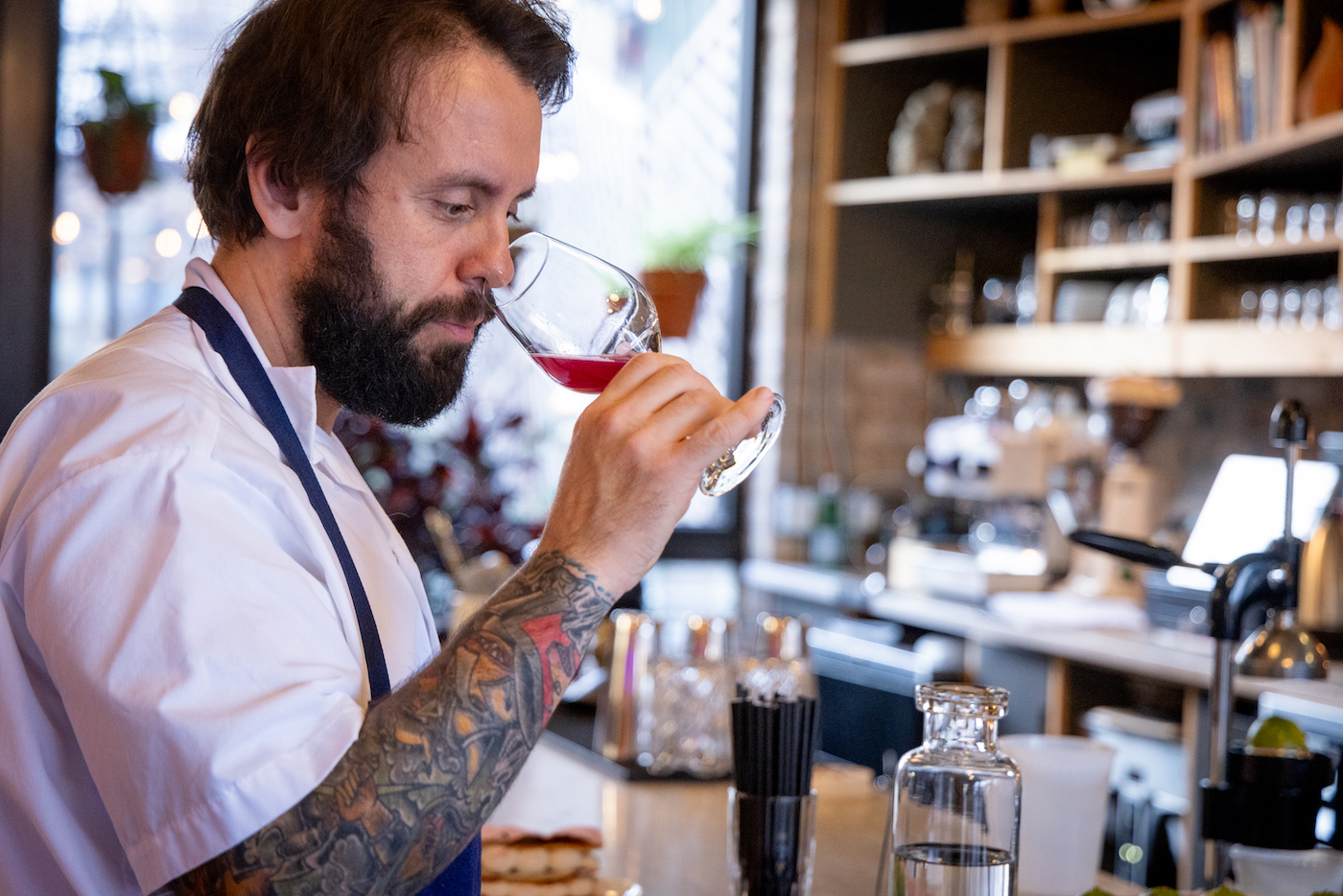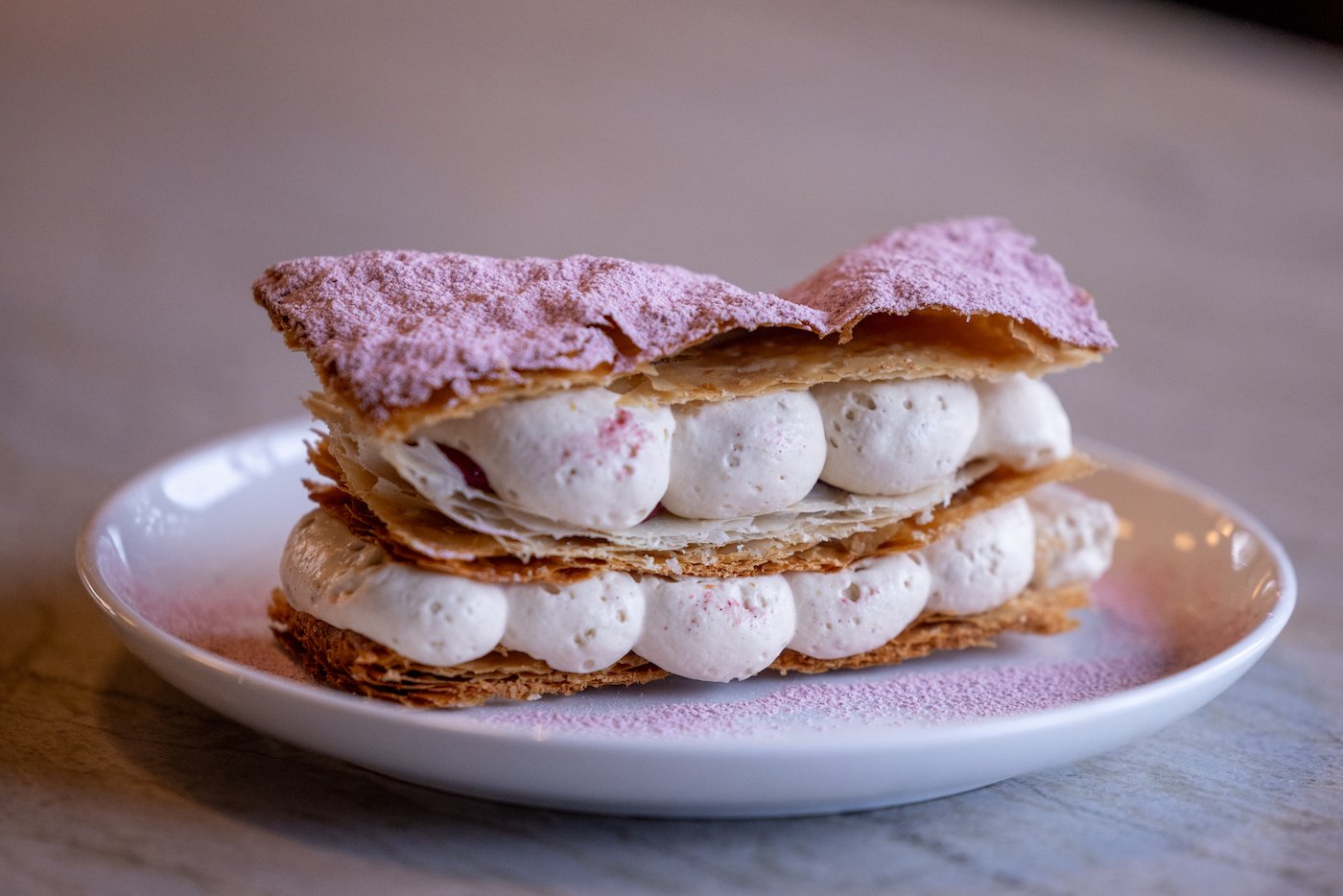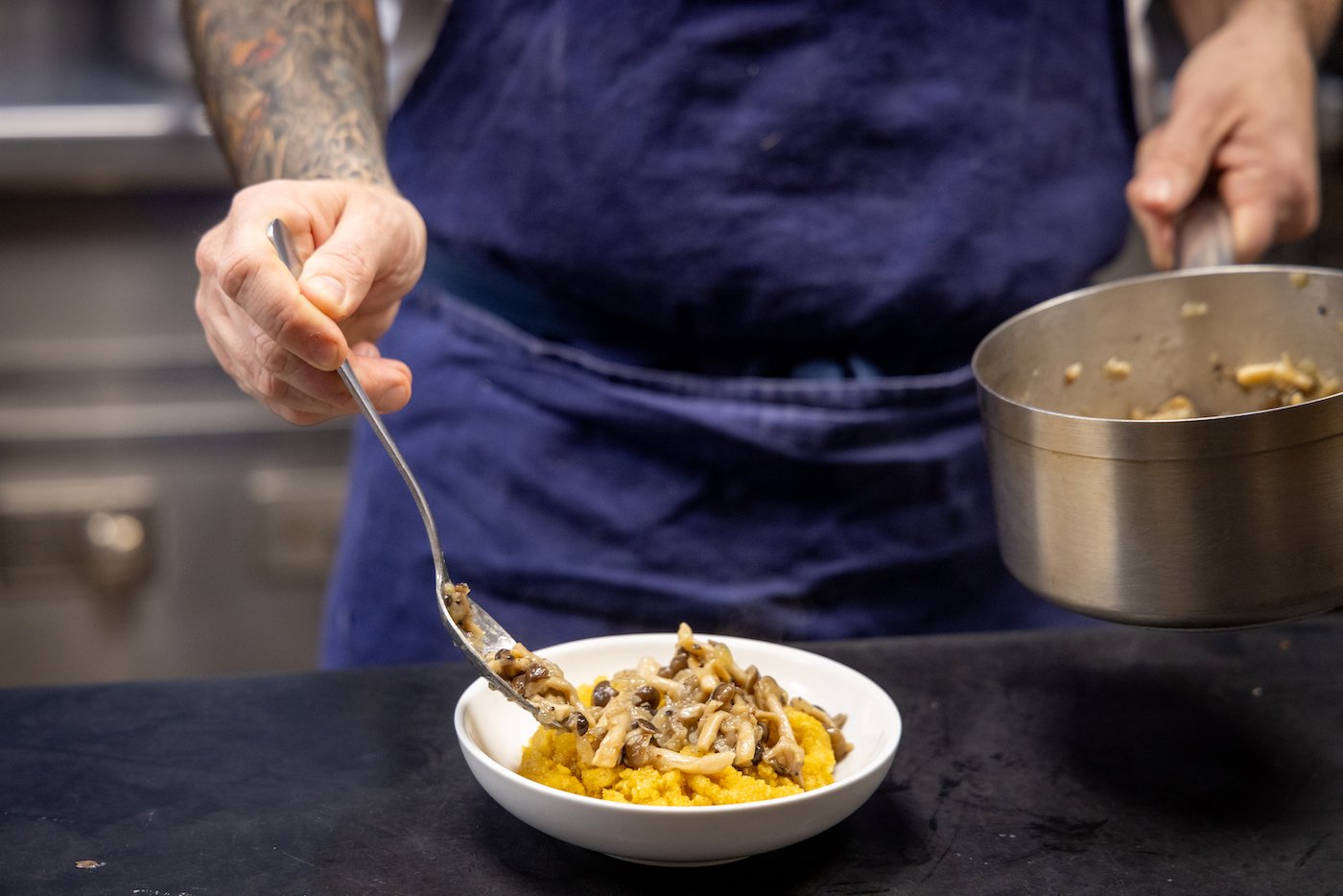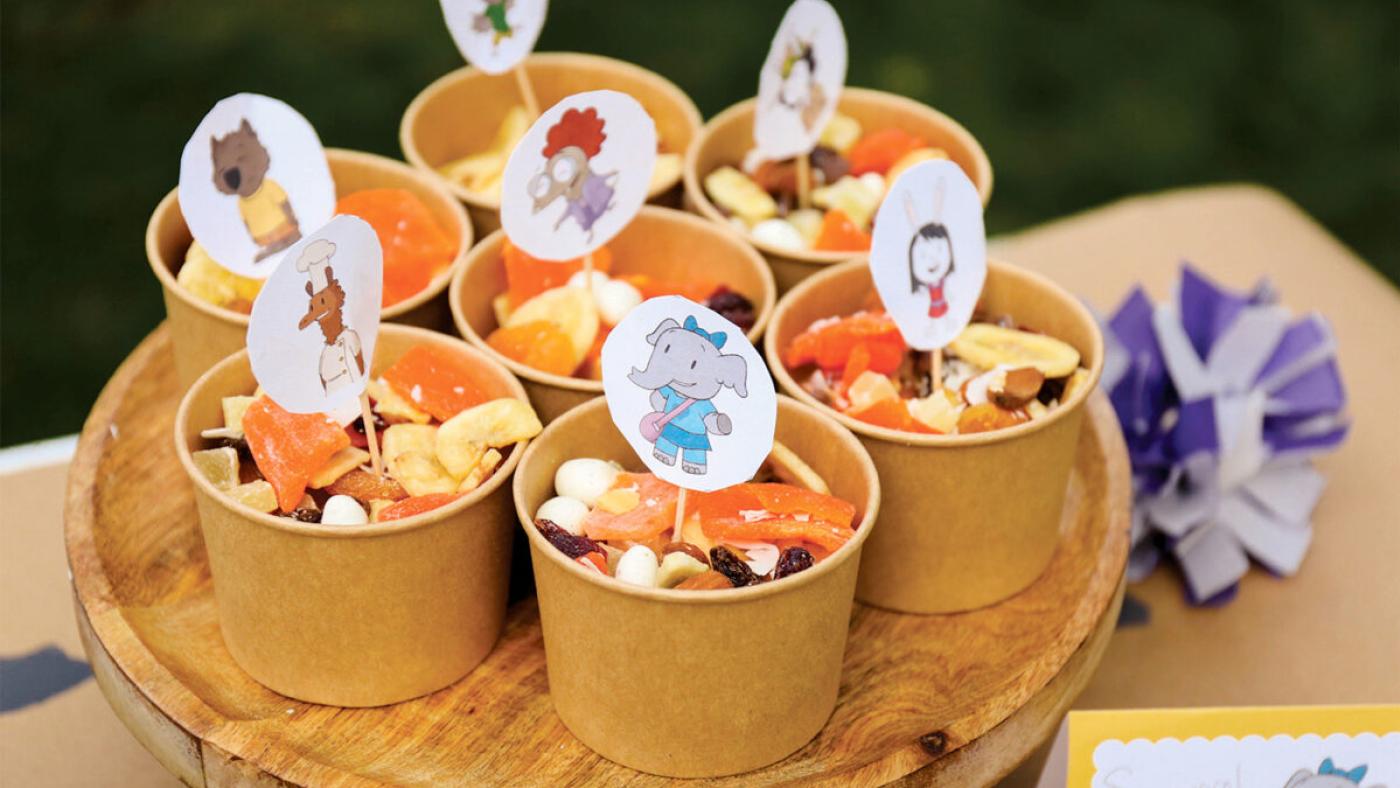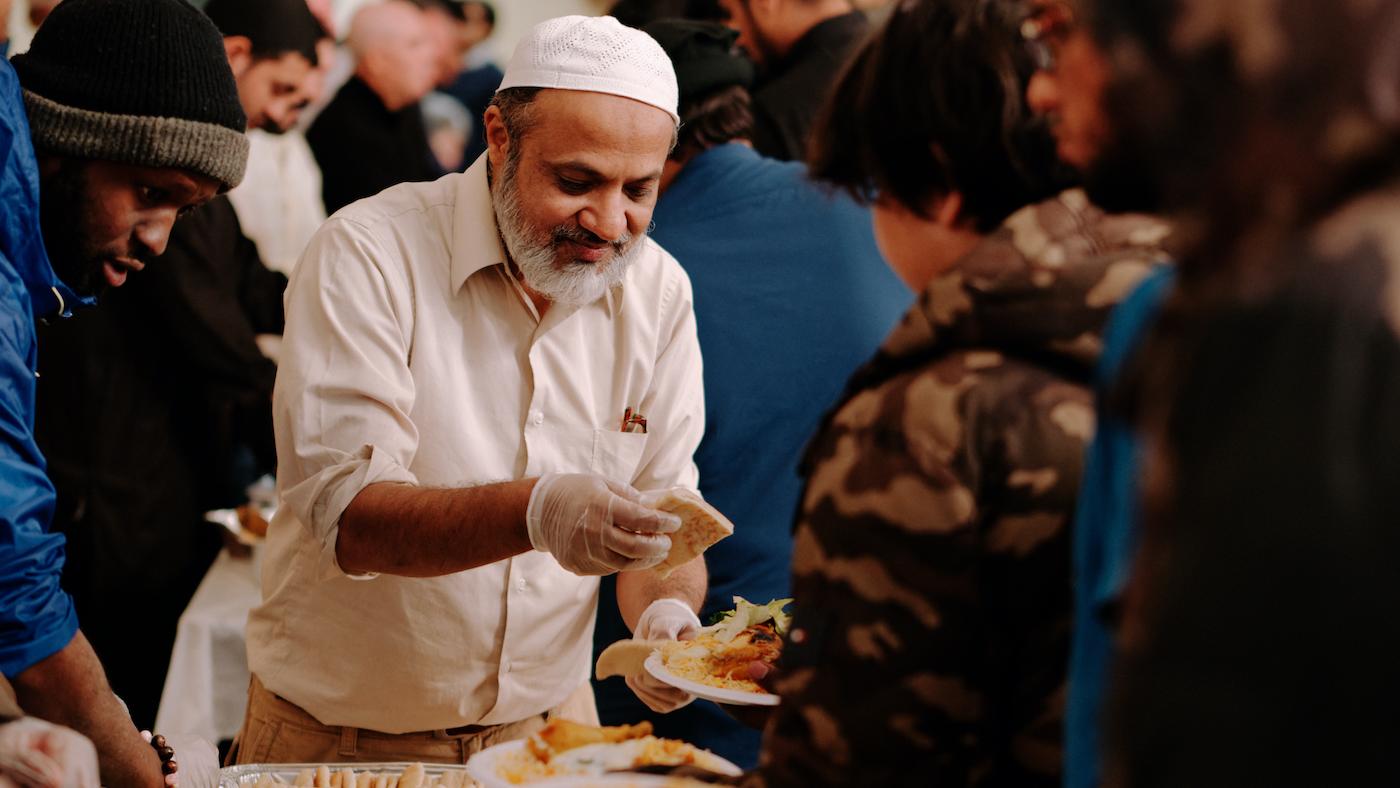"It's Now or Never": A Chicago Chef Embraces His Ukrainian Heritage in a New Restaurant
Daniel Hautzinger
December 19, 2023
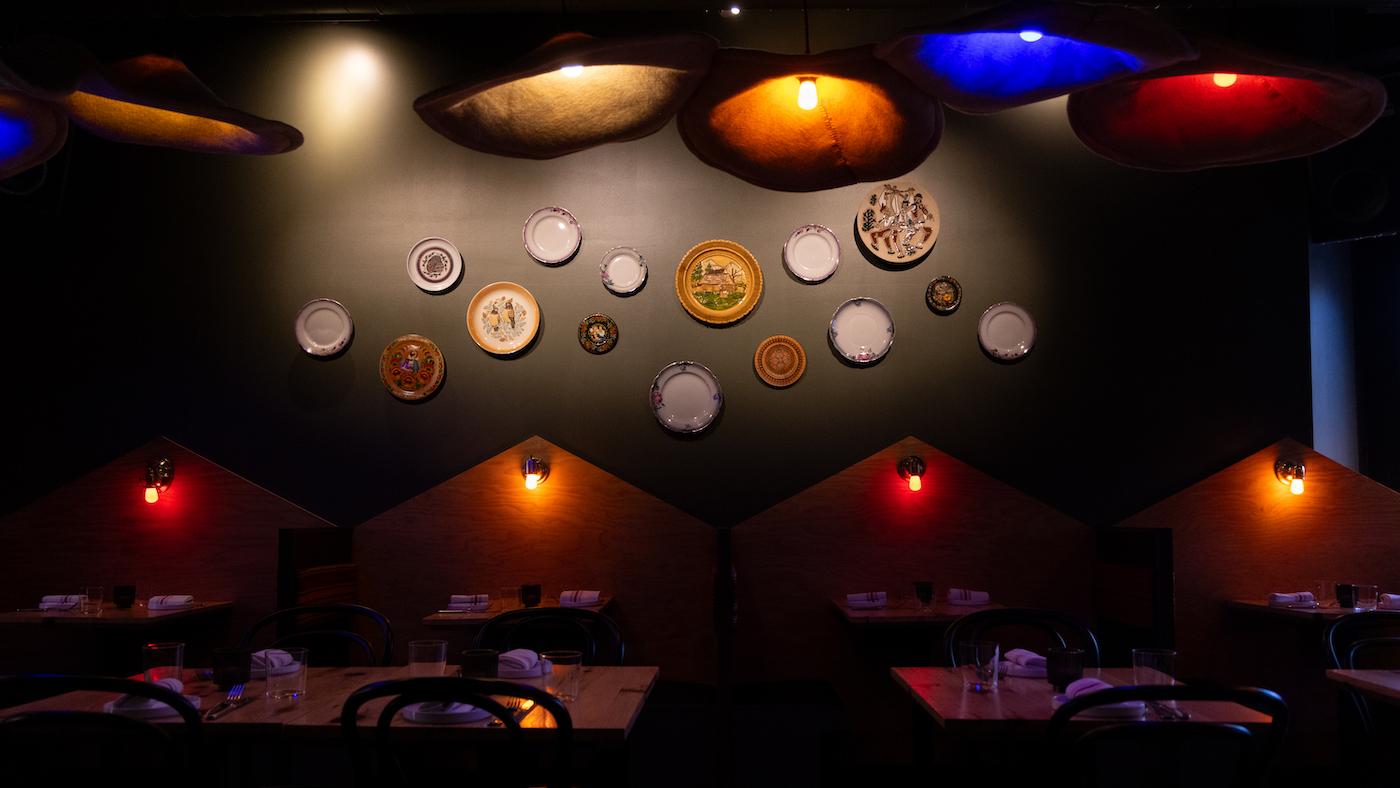
Get more recipes, food news, and stories by signing up for our Deep Dish newsletter.
If you went to a gathering at the home of the chef Johnny Clark’s grandma Anelya, you’d find a table loaded with a cornucopia of food: pickles, fish, bread, eggs, maybe a pate or cold cut. “There’s always lots of zakusky on the Ukrainian table,” Clark says. Zakusky “aren’t your appetizers; they’re more your opening drinking snacks.”
At Anelya, the new Ukrainian restaurant in Avondale that Clark named after his grandma, the zakusky is wheeled up to your table on a tiered cart. Bite-size portions of shimmering herring, boiled eggs topped with silvery anchovy, fried olives, marbled carrot pate, pimentón-stained hummus, and more sit like jewels on the bedazzling, geode-like trays, ready to enhance a taste of alcohol with oil, fat, and salt.
And there are plenty of drinks to choose from at Anelya, which Clark and his wife opened in the space that once housed their accessible tasting menu restaurant Wherewithall, which closed earlier this year after an issue with a city water main. The new restaurant’s beverage menu, like its food, is unique, full of things that are hard to find in this country.
Most traditional as an accompaniment to zakusky are sour cherry brandy and vodkas infused with horseradish, crabapple, or botanicals, which are available on their own or incorporated into cocktails. There’s an entirely Eastern European wine list, featuring vintages from some of the oldest wine-making regions in the world, many from small producers. On the non-alcoholic side, you can currently try the holiday cider uzvar (try Clark’s recipe at home) or several flavors of kvass, a traditional fermented beverage.
“If I break it down into really simple terms, I tell people that it’s like a Ukrainian kombucha,” Clark says of kvass, qualifying that the two beverages are made in distinct processes. At Anelya, “we try not to make it as sweet, because I want it to be like a wine alternative, because there are complexities in there that are unique to each batch.”
As a child, Clark would make bread kvass with his grandma at her home in Cincinnati, where she hosted his family for weekly Sunday dinners. Reinterpreted versions of other dishes from those dinners have also made it onto Anelya’s menu, like a Napoleon, her favorite dessert. But she didn’t have a large repertoire of Ukrainian recipes, in large part because of traumatic experiences in her life and in the history of her country, according to Clark.
She was born in 1924 in Kharkiv, the second-largest city in Ukraine today and a major target of Russia’s invasion of the country in 2022, given its proximity to the Russian border. (It remains under Ukrainian control.) Given the shifting borders and geopolitics of her time, Anelya’s family spoke Ukrainian, Russian, German, and Polish; she learned English upon immigrating to America. Her early life was marked by the Holodomor, a man-made famine resulting from Soviet policies that the U.S. Congress has characterized as a genocide by Joseph Stalin against Ukrainians. Millions of people died in the famine, and so did many traditions, including recipes, along with them. “A lot of the traditions left with them,” says Clark.
Clark’s grandma spent three years doing forced labor in Germany after the Nazis captured Ukraine during World War II, according to Clark, then lived in a displaced persons camp for two more years before immigrating to the United States and settling in Cincinnati. She raised three children there by herself after her husband left.
“She went through a lot of stuff, and that’s why I named the restaurant after her,” Clark says. “She was my inspiration for me my whole life.”
But for most of his life he didn’t really cook Ukrainian food, either at home or in restaurants. He immersed himself in Korean food and, with his wife Beverly Kim, has an acclaimed Korean restaurant, Parachute, up the street from Anelya. The first time he had Ukrainian food outside the home was when he moved to New York City in the early 2000s, and he only knew about a dozen dishes from his grandma.
“Maybe a lot of immigrant families feel this way about their family’s history, like I didn’t know there was something that could actually be a restaurant,” he says.
And there are only so many Ukrainian restaurants in America, even in Chicago, which has the second-largest population of Ukrainian immigrants in an American city, designated Ukrainian Village an official neighborhood in 1983, and is a sister city to Ukraine’s capital Kyiv. “I could count on one hand how many [Ukrainian] restaurants there are” in Chicago, Clark says.
Only during the pandemic did Clark start to cook some Ukrainian food, researching dishes online and conversing with chefs in Ukraine. After Russia’s invasion, he started hosting pop-up dinners at Wherewithall spotlighting Ukrainian cuisine in an effort to raise money for nonprofits aiding Ukrainians and keep Ukrainian culture alive. One of the chefs he had met online sent him cookbooks from Ukraine to help him learn new recipes. After the stress of the pandemic and the blow of the water main shuttering Wherewithall, he and Kim decided it was the right time to open Anelya in its place.
“I was inspired by the tragedy to do something, and I felt like, if I’m going to do a Ukrainian restaurant, it’s now or never,” he says.
He traveled around Ukraine in April of this year, visiting his grandma’s home town of Kharkiv with one of the chefs he had met online. He has also learned about the cuisine from two Ukrainian women who started working at Parachute this year. “The whole Ukrainian community has introduced me to dishes that I haven’t ever had,” he says.
Given the repression of Ukrainian culture during the Soviet period, some of the dishes at Anelya may not be familiar even to some Ukrainian Americans. “After the fall of the Soviet Union in the ‘90s, there’s been a resurgence of Ukrainian traditions, and people have been reviving lost recipes and introducing them again to the population after many years of almost hiding their culture,” he says.
A side dish of cornmeal called banosh comes from an isolated mountainous region near the Hungarian border where a group called the Hutsul live. “Their food tends to be heavier and richer,” Clark says, but he emphasizes that in other parts of the country the dishes are light and fresh, especially during the summer. “It’s a very seasonal and regional cuisine,” he says.
Borscht is a good example. The magenta, beet-based soup, which many people associate with Russia, actually originated in Ukraine, and the “culture of Ukrainian borscht” was recently added to UNESCO’s List of Intangible Cultural Heritage in Need of Urgent Safeguarding. “[B]orscht is considered part of the fabric of Ukrainian society, cultural heritage, identity and tradition,” UNESCO states.
But there are endless variations of the soup depending on regional produce and familial preference. Anelya’s version includes smoked pears (an ingredient also found in their uzvar), an example of the common use of fruit as a balancing ingredient in Ukrainian dishes. Anelya has a dessert of plums with spiced wine, while braised short ribs are accompanied by huckleberries and noodles in halushki. Other ingredients come from nearby areas like the Caucasus (kefir and the spicy sauce ajika) and the Middle East (saffron, baharat, and the stuffed grape leaves dolma).
“There’s a cross-appreciation for other regional cuisines” in Ukraine, Clark says.
The addition of such elements illustrates Clark’s approach of serving traditional Ukrainian dishes, updated with some cheffy touches reflective of his years of experience in high-end restaurants. “It all starts with the classics,” he says of the menu, “but we put a modern finesse and flair on things. I’m using all the techniques I’ve used throughout my career and implementing that to Ukrainian food.”
He wants to make sure that the traditional dish still shines through, however. “What we’re really trying to do is showcase that Ukrainian food is its own unique culture,” he says.
“The mission of the restaurant is to introduce people to Ukrainian food and culture,” he continues. “This is just my peaceful way of fighting back, and making sure that Ukraine’s culture and food doesn’t disappear again like it did in the past.”
Try Clark's recipe for uzvar, a Ukrainian cider of dried fruits and nuts that is often served at the holidays.

